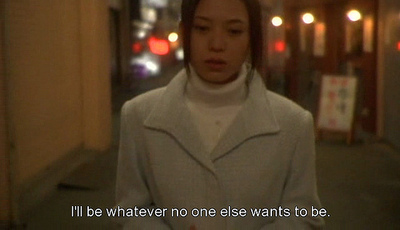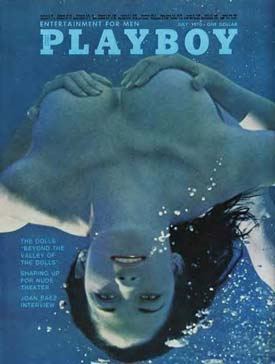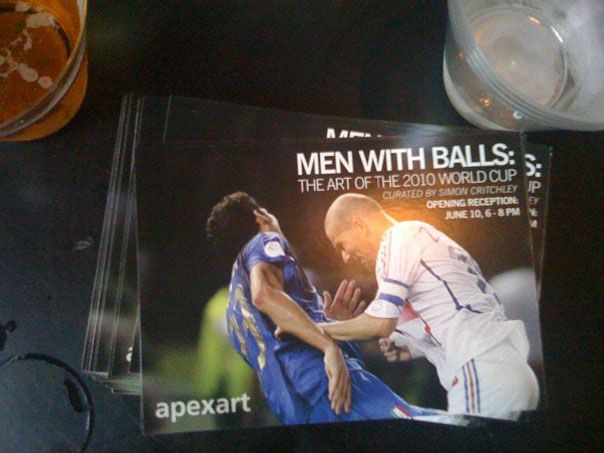guide

What followed was a fascinating assortment of statistics and tidbits about how design influences how people shop. (…)
It takes eight seconds to walk by a typical storefront. Once someone is two seconds past the door, they will not turn around. You have to grab them in the first four seconds while they are approaching.
Within two seconds of entering a store, 70% of people know whether they will buy something. Stores use simple window displays and a “front and center” table to clearly and quickly convey what’s hot, and most train a staff member to welcome customers immediately upon entry.
An open door generates 35% more business than a closed door. Doors that are flush to the sidewalk are more inviting than recessed doors. Outdoor planters and a lot of downlight can make a recessed entry more welcoming. How many museum and library entrances are hard to find, dark, and require opening a heavy door? (…)
People like to walk in a loop. They avoid “cul de sacs” that they can see are dead-ends, because they don’t want to get bored walking through the same merchandise twice. (…)
75% of American spending occurs after 5:30pm and on Sunday.
{ Museum Two | Continue reading }
economics, guide | October 19th, 2010 6:07 pm

1. It’s going to get worse
No silver linings and no lemonade. The elevator only goes down. The bright note is that the elevator will, at some point, stop.
2) The future isn’t going to feel futuristic
It’s simply going to feel weird and out-of-control-ish, the way it does now, because too many things are changing too quickly. The reason the future feels odd is because of its unpredictability. If the future didn’t feel weirdly unexpected, then something would be wrong.
{ Douglas Coupland’s guide to the next 10 years | The Globe and Mail | Continue reading }
photo { Ali Bosworth }
future, guide, haha, ideas | October 13th, 2010 8:37 pm

{ 1. unsourced | 2. Ignas Kozlovas }
animals, guide, visual design | October 12th, 2010 7:24 pm
guide, new york | October 1st, 2010 4:00 pm

Adopt a growth mindset. Students who believe that intelligence and academic ability are fixed tend to stumble at the first hurdle. By contrast, those with a ‘growth mindset’, who see intelligence as malleable, react to adversity by working harder and trying out new strategies. (…)
Sleep well. Study found that lack of sleep impairs students’ ability to learn new information. (…)
Forgive yourself for procrastinating. Everyone procrastinates at some time or another – it’s part of human nature. The secret to recovering from a bout of procrastination is to forgive yourself. (…)
Take naps. Numerous studies have shown that naps as short as ten minutes can reduce subsequent fatigue and help boost concentration. It’s only recently, however, that researchers have turned their attention to napping technique. Dayong Zhao and colleagues recruited 30 undergrad regular nappers and tested whether it makes any difference if you nap lying down or leaning forward with your head rested on a desk. Zhao’s team found that a post-luncheon twenty-minute nap in either position was associated with increased performance at an auditory oddball task (listening to a series of tones and spotting the odd one out), but only napping lying down was associated with an increased P300 brain wave signal during the task recorded via EEG – a sign of increased mental alertness. (…)
Believe in yourself. Self-belief affects problem-solving abilities even when the influence of background knowledge is taken into account.
{ BPS | Continue reading }
guide, health, psychology | September 3rd, 2010 2:31 pm

According to Bockus’s Gastroenterology, a standard medical text from 1964, “the ideal posture for defecation is the squatting position, with the thighs fixed upon the abdomen.” (…)
There’s now some empirical evidence for the claim that defecation posture affects your body. The more extreme assertions about squatting—that it prevents cancer, for example—remain untested. But when it comes to hemorrhoids—a painful swelling of the veins in the anal canal that affects half of all Americans—new research suggests that you may want to get your butt off the toilet.
Before we dive into the data, let’s review the mechanics of going to the bathroom. People can control their defecation, to some extent, by contracting or releasing the anal sphincter. But that muscle can’t maintain continence on its own. The body also relies on a bend between the rectum—where feces builds up—and the anus—where feces comes out. When we’re standing up, the extent of this bend, called the anorectal angle, is about 90 degrees, which puts upward pressure on the rectum and keeps feces inside. In a squatting posture, the bend straightens out, like a kink ringed out of a garden hose, and defecation becomes easier.
{ Slate | Continue reading }
guide, health | September 1st, 2010 4:20 pm
guide, haha | August 31st, 2010 12:00 pm

…modern career theories (…) importance of personal meaning within career choice.
But what about meaninglessness?
Shouldn’t we be looking at that too? (…)
‘The Four-Roomed Apartment of Change’ is used to capture some of the things that happen to people and organisations when they experience change.
The four rooms represent four frames of mind that an individual may pass through as they encounter a change in their lives. (…)
The room of Contentment. In this room people feel relaxed and free from threat. (…)
When people do begin to perceive change they might fall down the trapdoor into the Denial room. (…)
When they get there, they will find the room of Confusion. (…)
Eventually, the fog may clear and they will find the ladder which leads to the Renewal room. (…)
What room are you in at the moment?
{ Careers – in Theory | Continue reading }
economics, guide, ideas, psychology | August 28th, 2010 7:42 pm

What is a healthy mind? Is it simply the absence of symptoms and dysfunctions, or is there something more to a life well lived? How can we embrace the diversity of behavior, temperament, values, and orientation across a wide range of cultures and still come up with a coherent definition of health? Just as some scientists are reluctant to define the mind, some people say that we shouldn’t define mental health at all, because it is authoritarian to do so—we shouldn’t tell others how to be healthy. But how do we account for the universal striving for happiness?
Positive psychology has offered an important corrective to the disease model by identifying the characteristics of happy people, such as gratitude, compassion, open-mindedness, and curiosity, but is there some unnamed quality that underlies all of these individual strengths?
Over the last twenty years, I’ve come to believe that integration is the key mechanism beneath both the absence of illness and the presence of well-being.
Integration—the linkage of differentiated elements of a system—illuminates a direct pathway toward health. It’s the way we avoid a life of dull, boring rigidity on the one hand, or explosive chaos on the other. We can learn to detect when integration is absent or insufficient and develop effective strategies to promote differentiation and then linkage. The key to this transformation is cultivating the capacity for mindsight.
{ Daniel SiegelPsychotherapyNetworker | Continue reading }
photo { Scarlett Hooft Graafland }
guide, health, ideas, psychology | August 28th, 2010 7:38 pm
guide, haha, social networks | August 18th, 2010 12:00 am

{ Green can contain more yellow which makes it warm but if more blue is added then green falls to the cool side. | Decorating with Warm Colors | Continue reading }

{ Red expresses intermediate degrees between the infernal and sublime. | Johannes Itten, The Elements of Color }
images { Imp Kerr & Associates, NYC }
colors, guide, imp, visual design | August 16th, 2010 3:37 pm

I forget where I read this tip, but I have used it many times with great success. It starts with the notion that most women change their hair all the time. You might not notice, but a woman is very aware of these small deviations in everything from highlights to length to fluffiness. I’m probably not using the official hairdresser terms, but you get the idea. It’s different every day, at least according to the woman who owns the hair. To me, hair is either brown or it isn’t, and you either have some or you don’t. The rest is beneath my radar.
So here’s the tip. When you see a woman who you haven’t seen for a few weeks, you can pay her this compliment, and it works every time. Say, “You’ve done something with your hair. I like it.”
The woman will feel flattered that you noticed anything beyond her hair’s very existence and its degree of brownness. She might even wonder if you can be her new gay friend. But she will confirm that something is indeed different and offer many details about how it got there. You can use that time to think about your hobbies.
So far, this idea isn’t mine. I just forget where I stole it from. But I did add a twist to it that I will claim credit for. You know how embarrassing it is when you introduce yourself to someone you think is a stranger at a gathering and the person says, “We met a few weeks ago.” This is a sure tipoff that you consider the person non-memorable. If the person is a woman, you can use the hair trick to save yourself. Simply look surprised that you have met before then pretend you are having a flash of recognition, and add “Of course! But your hair is different today. It threw me.”
Now you have flipped it from being the idiot who can’t remember a new person for a few weeks into a person who has such intense memory for detail that any deviation is the same as a mask.
Yes, I’ve used that method often. I can’t say it works every time, but it sure beats my old method of arguing that I must look like some other person and I just arrived in town an hour ago.
{ Scott Adams }
photo { Imp Kerr & Associates, NYC }
guide, hair, relationships | August 16th, 2010 2:00 pm

We can see each other, but we can never know exactly what’s going on in the other’s head.
It’s partly why psychological science is so hard and it’s why understanding how we are viewed by others is so hard.
Research shows that we normally try to work out how others see us by thinking about how we view ourselves, then extrapolating from that. The problem with this approach is that to varying degrees we all suffer from an ‘egocentric bias’: because we’re locked inside our own heads, we find it difficult to see ourselves objectively. In some ways all the information we have clouds our judgement. (…) People trying to put themselves in the other person’s shoes were awful at the task. (…) But, when participants thought about their future selves, a technique that encourages abstract thinking, suddenly people’s accuracy shot up.
{ PsyBlog | Continue reading }
guide, psychology | August 9th, 2010 7:12 pm

Tomorrow, in a very real sense, your life — the life you author from scratch on your own — begins.
How will you use your gifts? What choices will you make?
Will inertia be your guide, or will you follow your passions?
Will you follow dogma, or will you be original?
Will you choose a life of ease, or a life of service and adventure?
Will you wilt under criticism, or will you follow your convictions?
Will you bluff it out when you’re wrong, or will you apologize?
Will you guard your heart against rejection, or will you act when you fall in love?
Will you play it safe, or will you be a little bit swashbuckling?
When it’s tough, will you give up, or will you be relentless?
Will you be a cynic, or will you be a builder?
Will you be clever at the expense of others, or will you be kind?
I will hazard a prediction. When you are 80 years old, and in a quiet moment of reflection narrating for only yourself the most personal version of your life story, the telling that will be most compact and meaningful will be the series of choices you have made. In the end, we are our choices. Build yourself a great story.
{ We Are What We Choose, Remarks by Jeff Bezos, as delivered to the Class of 2010, Baccalaureate | Princeston University | Continue reading }
future, guide, ideas, kids | July 26th, 2010 8:22 pm

How to maxmize your happiness from a vacation
1. Enjoy the planning process
2. Do your best to make your trip very relaxing (a trip that is just ‘relaxed’ doesn’t quite cut it)
3. Multiple short trips are better than one long trip
{ Psychothalamus | Continue reading }
We’re happier when busy but our instinct is for idleness. Unless we have a reason for being active we choose to do nothing - an evolutionary vestige that ensures we conserve energy.
{ BPS | Continue reading }
guide, leisure, psychology | July 25th, 2010 10:29 am

The Instinctive Drowning Response is what people do to avoid actual or perceived suffocation in the water. And it does not look like most people expect. There is very little splashing, no waving, and no yelling or calls for help of any kind.
To get an idea of just how quiet and undramatic from the surface drowning can be, consider this: It is the number two cause of accidental death in children, age 15 and under (just behind vehicle accidents). (…) In ten percent of those drownings, the adult will actually watch them do it, having no idea it is happening. Drowning does not look like drowning.
1. Except in rare circumstances, drowning people are physiologically unable to call out for help. The respiratory system was designed for breathing. Speech is the secondary or overlaid function. Breathing must be fulfilled, before speech occurs.
{ gCaptain | Continue reading }
photo { Playboy, July 1970 }
guide, incidents, leisure, water | July 25th, 2010 10:20 am

“Yoga is a good thing, so you tend to push further than you would in a sport where you are actually more attuned to injury and afraid of injuries,” said Dr. Michelle Carlson, an orthopedic surgeon at the Hospital for Special Surgery in Manhattan who specializes in arms and hands. She said she recently “saw four women in a row in my office with hand injuries from yoga.”
Nobody seems to keep careful track of the numbers. The most recent estimate comes from the United States Product Safety Commission, which tracks sports injuries: it listed 4,450 reported yoga injuries in 2006, up from 3,760 in 2004. But Dr. Carlson and several others said they had seen large increases lately, as yoga became more popular. “I have been doing this for 20 years, and I didn’t see yoga injuries 20 years ago,” Dr. Carlson said. “I can see a couple of injuries a week.”
Training for yoga teachers can vary, and classes are so large in some studios that instructors do not pay enough attention to everybody. In New York, many people approach yoga with a no-pain, no-gain mind-set, with predictable results.
Then there is the age factor: you see a fair share of middle-aged people twisting and bending and lunging, and I know from experience that a 40-something body is temperamental.
Back injuries are quite common. Positions like upward dog and cobra, requiring backbends, can aggravate the spine. Others that call for elongating the back, like seated forward bend, can wreak havoc on discs. Rotator cuffs and wrists can get battered during plank poses and chaturangas, which are like push-ups, while knees are susceptible to the lotus position, hero’s pose and the warrior positions.
The headstand — a more advanced move — is an equal opportunity offender. If done improperly, it can roil your back, neck, shoulders and wrists.
Then there are the freak injuries. A woman in crow pose fell over and broke her nose.
{ NY Times | Continue reading }
photo { Anthony Suau }
guide, health, new york, sport | July 25th, 2010 10:12 am

The Creativity Elixir: Is Genius On-Demand Possible?
After much experimentation, I figured out my personal recipe for creativity on-demand: circadian scheduling, altered states, and white noise. Huh? It’s actually simple…
1. Time it: Determine your most prolific creative period during a normal 24-hour period. It took me a long time to accept 1-5am as my best hours, which was the only timing that provided consistent progress. I also distinguish between idea generation and idea “creation” (combination into a meaningful whole). 1-3pm was spent brainstorming fragmented concepts and anecdotes, as well as interviewing and note taking. I would circle the best ideas and then put them in order at 1am for an attempt at synthesis.
I don’t believe that it is possible to do more than 4 hours of good creative work per waking cycle. This can be extended only slightly by caffeine power naps (down a cup of espresso and then take a 20-minute nap) or “ultra-naps” that are multiples of the 90-minute ultradian cycle (I prefer 90 minutes or 3 hours).
2. Biochemically Fine-Tune. I found by accident that my best sessions all followed a specific ratio: 3 cups of yerba mate tea for each glass of wine consumed. 3:1. I also like adding a little theobromine with a few E. Guittard 72% cacao chocolate cooking chips every 20 minutes or so.
{ Tim Ferris | Continue reading }
guide, ideas, time | June 22nd, 2010 8:27 am

{ The Social Art Collective is proud to present Heroin Stamp Project, an exhibition focusing on the branding of heroin in New York City. At once beautiful and unsettling, the images in the exhibit illustrate a complex narrative around public health and preventable consequences of injection drug use. | White Box, 329 Broome Street, NYC | June 23rd - June 29th, 2010 | Thanks Ser Gee! }
guide, new york, visual design | June 22nd, 2010 8:02 am
guide, new york | June 11th, 2010 8:24 am























